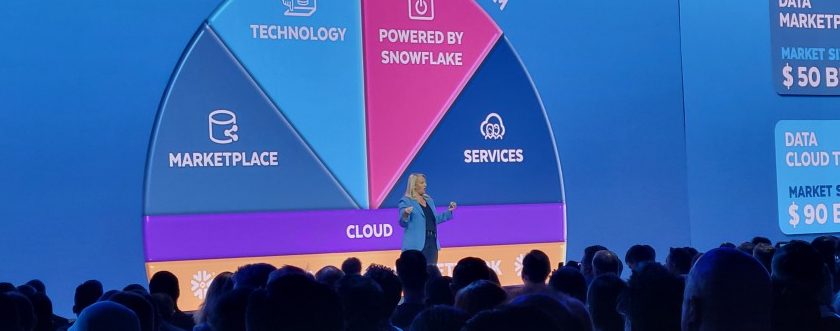Snowflake Summit for 2022, held June 16-19 in Las Vegas, NV was nothing short of a snowstorm <albeit a pleasant one> of announcements and innovations for the Data Cloud community. Following the in-person hiatus since 2019, the Summit drew attendees, customers, and vendors from every major vertical/market you can imagine…and some you (or at least I) couldn’t.
Alongside some welcomed announcements of overall platform performance improvements (that you’ll get for free) and a few other updates that I didn’t fully catch so won’t cover here, below is a list of the truly notable announcements from the Summit, in the order I found them the most impactful:
Snowflake Unistore
This is a game changer! Snowflake announced a new workload type that flies in the face of what you’ve been told Snowflake is. Breaking the tie to the mental model that Snowflake is just a data warehouse platform, Unistore introduces true transactional capabilities for Snowflake, making it now an end-to-end data platform for applications to deep analytics and everything in between in the cloud. This moves the needle ever closer to the data-centricity all businesses should be striving for. Storing data for both your transactional and analytical workloads and providing the ability to query them together in real time is something everyone asks for. It’s becoming a reality without the need for heavy engineering/architecture.
As of the writing of this post, Unistore is only available to select customers, including Adobe, UiPath, Novartis, IQVIA, and Wolt, but should be available for public preview shortly.
Iceberg tables
Another innovation for hybrid cloud computing. Iceberg Tables allow you to access on-prem file stores as Snowflake external tables. Snowflake’s implementation of the open-source Apache Iceberg technology further provides full standard table support (CRUD operations and access to some of the native Snowflake features like time-travel, RBAC, etc.). This opens doors, in my opinion, to simplified on-prem to cloud data migrations and a potential way to meet compliance regulations for data storage.
Account level object replication
Sure Snowflake has provided data replication, even between cloud providers, for years, but now you can replicate other account-level objects like users, roles, stages, and pipes. This could help quite a bit with HA/DR solutioning.
Snowpipe streaming + materialized tables
This announcement is music to the ears of architects and engineers looking for the easy button for implementing real-time data ingestion (and improved performance for such) and the ability to query that streamed data right alongside your persisted data by leveraging the new Materialized Table feature to choose when and how to persist the streamed data from transitory to permanent storage.
Native application framework
Potentially another game changer. Create, deploy (and monetize) data-centric applications directly to Snowflake, bringing your applications to the data, instead of the other way around. Also leveraging its partnership with Streamlit, Snowflake now offers some really interesting real-time data analytics and visualization integrations with collocated development and performance benefits.
Snowpark for Python
Snowpark is such a straightforward way to develop robust data pipelines for Snowflake and now includes support for Python as a first-class citizen to enable collaboration between engineering and data science teams inside Snowpark. Python even works in Worksheets alongside SQL!
Snowflake Summit 2023 is already in the works if you’re interested in keeping tabs.
The thoughts shared here are my own and may or may not be the shared views of my employer 😊

